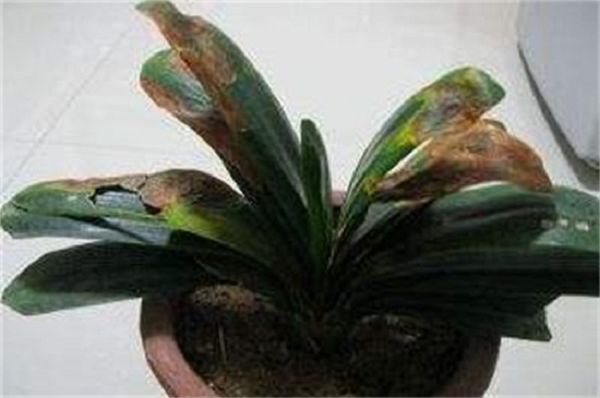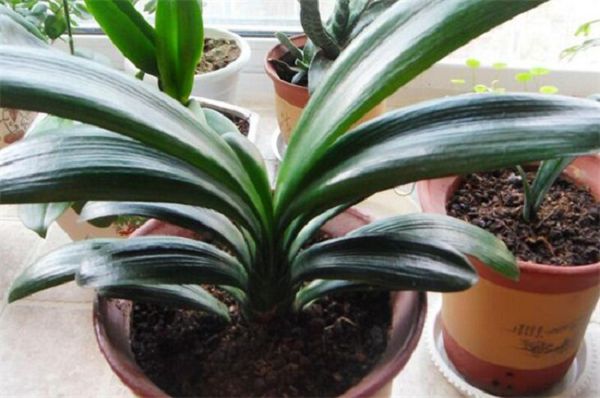What if the leaves of Cymbidium turn black?

The blackening of the leaves of Cymbidium may be caused by too much watering, the rotten roots need to be cut off and watered every 2 to 3 days, and the soil should be changed every 10 to 15 days to apply nitrogen fertilizer. If the light is too strong, it should be carefully maintained in a cool place, diseased branches and leaves should be treated in time when suffering from diseases, and insecticides should be sprayed to control diseases and insect pests to promote the leaves of Cymbidium to regain its vitality.
1. Root cutting to control water
The blackening of the leaves of Cymbidium may be caused by stagnant water and rotten roots. it is necessary to remove the rotten roots from the soil and replace the soil to control watering and careful conservation. It can be watered every 2-3 days to keep the soil moist.
2. Change soil and control fertilizer
Although it is said that the orchid needs to provide sufficient nutrients, the amount of fertilizer should not be too much each time, otherwise it will blacken the leaves of the orchid and reduce the ornamental value of the orchid. We can change the soil for the orchid and apply nitrogen fertilizer every 10 to 15 days to make the orchid recover gradually.
3. Shading and sunscreen
If too much light will blacken the leaves of Cymbidium, then it is necessary to move the orchid to a shady place for maintenance, provide moisture to the orchid in time, and do a good job of shading and sunscreen.
4. Disease prevention and control the leaves of Cymbidium have blackened, in addition to the usual maintenance problems, it may also cause diseases. It is necessary to improve the growth environment of Cymbidium, strengthen its management, and deal with diseased branches and leaves. Spraying chemicals can gradually restore the leaves of Cymbidium.
- Prev

The best watering method for gentleman orchids should be seasonally watered and thoroughly watered.
The best watering method for gentleman orchids should be seasonally watered and thoroughly watered.
- Next

What happens when there are too many manure orchids
What happens when there are too many manure orchids
Related
- Is the orchid suitable for indoor use? Is it good for the body?
- How to prevent the empty root of orchids?
- What to do after the crab claw orchid is withered?
- Why are the leaves of orchids always yellow? Fertilizing and watering.
- Can the root of the gentleman orchid be saved if it is rotten?
- Diagnosis and treatment of cotton-blowing beetle insects in Cymbidium
- There is a way for a gentleman's orchid to rot.
- What is the most suitable temperature and humidity for the orchid?
- How to raise a gentleman's orchid? Cultivation techniques of Cymbidium
- How to prepare the nutritive soil for the cultivation of Cymbidium

